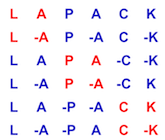112 INTEGER ncols, lda, ldaf
115 DOUBLE PRECISION a( lda, * ), af( ldaf, * ), work( * )
122 DOUBLE PRECISION amax, umax, rpvgrw
126 INTRINSIC abs, max, min
134 upper =
lsame(
'Upper', uplo )
151 $ max( abs( a( i, j ) ), work( ncols+j ) )
158 $ max( abs( a( i, j ) ), work( ncols+j ) )
166 IF (
lsame(
'Upper', uplo ) )
THEN
169 work( j ) = max( abs( af( i, j ) ), work( j ) )
175 work( j ) = max( abs( af( i, j ) ), work( j ) )
187 IF (
lsame(
'Upper', uplo ) )
THEN
190 amax = work( ncols+i )
191 IF ( umax /= 0.0d+0 )
THEN
192 rpvgrw = min( amax / umax, rpvgrw )
198 amax = work( ncols+i )
199 IF ( umax /= 0.0d+0 )
THEN
200 rpvgrw = min( amax / umax, rpvgrw )
double precision function dla_porpvgrw(uplo, ncols, a, lda, af, ldaf, work)
DLA_PORPVGRW computes the reciprocal pivot growth factor norm(A)/norm(U) for a symmetric or Hermitian...

